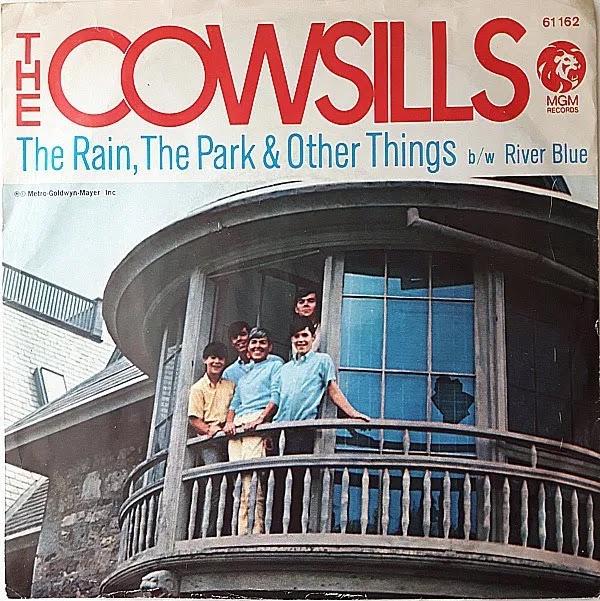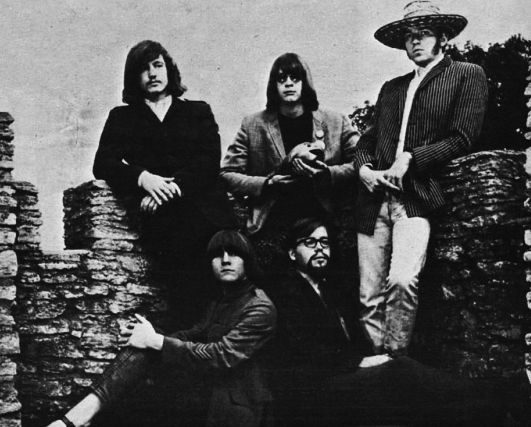
The 1960s was an era of unprecedented musical innovation and profound cultural upheaval. It was a decade that burst with creativity, producing not only legendary artists and timeless anthems that continue to resonate with us today but also a vibrant tapestry of sounds that defined a generation. While we often think of the enduring classics that have stood the test of time, there was a whole universe of songs that shined brightly, topped the charts, and played non-stop on radios and jukeboxes, only to mysteriously vanish from our collective playlists in the decades that followed. These weren’t just minor hits; they were ubiquitous, soundtracking road trips, high school dances, and summer romances for an entire generation, becoming ingrained in the fabric of daily life.
Some of these tracks were novelty tunes that burned fast and faded quickly, designed for immediate impact and fleeting fun. Others were heartfelt ballads or catchy pop songs that, for one reason or another—perhaps they were overplayed, replaced by new trends, or simply swept away by the relentless passage of time—disappeared from regular radio rotation and cultural memory. Yet, the raw power and charm of these forgotten gems remain undiminished. If you play any of these songs today, you’ll be instantly transported straight back to the era of Beatlemania, flower power, and transistor radios, feeling the pulse of a truly transformative decade.
So, get ready for a nostalgic, deep dive into the vinyl crates! We’re embarking on a musical voyage of discovery, celebrating 14 ’60s songs that once ruled the airwaves, defined a generation, and then, almost inexplicably, just disappeared. Join us as we revisit these phenomenal tracks and remember their undeniable impact during their heyday, proving that even the biggest hits can sometimes become hidden treasures, waiting to be rediscovered by new ears and cherished anew by those who remember them. This is more than just a list; it’s a time capsule.

1. **“The Rain, The Park & Other Things” by The Cowsills**The Cowsills truly captured the innocent yet vibrant essence of the swinging ’60s with their incredibly catchy tune, “The Rain, The Park & Other Things.” This song wasn’t just a simple track; it was an open invitation to a more innocent and discovery-filled time, its cheerful melody and whimsical lyrics filling the airwaves across the nation with an almost irresistible charm. It beautifully embodied a certain carefree spirit that many longed for, offering a momentary escape into a world of youthful wonder during a decade marked by significant change.
What truly made this song stand out and resonate so deeply with audiences was its unique sonic landscape and sophisticated arrangement. The lush harmonies, a signature and distinguishing characteristic of The Cowsills as a family band, combined with a surprisingly rich orchestral backdrop, immediately set it apart from many other, often simpler, pop hits of the era. It created a vibrant, almost cinematic experience that listeners couldn’t get enough of, making it a constant and welcome presence on radio stations throughout 1967.
Despite its initial widespread popularity and undeniable charm, becoming a top-10 hit, “The Rain, The Park & Other Things” slowly, almost imperceptibly, faded from mainstream radio rotation as the decade drew to a close and new sounds emerged. Today, it serves as a beautiful, nostalgic reminder of a bygone era, a perfectly preserved snapshot of a moment in time, where music was a crucial part of a larger cultural revolution, still holding a special place for those who remember its initial, glorious reign.

2. **“Incense and Peppermints” by Strawberry Alarm Clock**If there was ever an anthem that perfectly encapsulated the psychedelic rock era, a song that defined the very spirit of its time, it was Strawberry Alarm Clock’s “Incense and Peppermints.” This track wasn’t just a song; it was an immersive experience, with its swirling, kaleidoscopic melodies and cryptic, evocative lyrics perfectly capturing the free-spirited essence of the ’60s counterculture movement. It was the undeniable sound of a generation bravely exploring new artistic and social boundaries.
The song’s unique sonic tapestry was a masterclass in psychedelic production, featuring a distinctive organ riff and a hazy vocal delivery that created a dreamlike atmosphere. It pushed the boundaries of popular music, introducing mainstream audiences to a more experimental and introspective style that was gaining traction in the underground scenes, and resonated deeply with listeners eager for something new. Its popularity soared, making it an absolute staple on radio stations nationwide, synonymous with the era’s adventurous spirit.
However, as with many groundbreaking, genre-defining tracks, music trends inevitably shifted with the passage of time, and its widespread airplay gradually diminished. Today, “Incense and Peppermints” is often regarded as a hidden gem, a true classic of its genre that occasionally resurfaces in retrospectives about the ’60s. It powerfully reminds us of a time when music was a profound vehicle for experimentation, ensuring its unique sound and cultural impact remain alive in the memories of those who experienced that transformative decade.

3. **“Green Tambourine” by The Lemon Pipers**”Green Tambourine” by The Lemon Pipers was a truly unexpected smash hit in late 1967, a brilliant and somewhat unusual fusion that perfectly blended the raw energy and experimental flair of psychedelic rock with the undeniable, saccharine catchiness of bubblegum pop. This song wasn’t just heard on the radio; its infectious tune and imaginative, almost surreal, lyrics captivated audiences, quickly securing its prominent place on the charts and becoming an instant classic.
The band’s sound was incredibly distinctive, a testament to their innovative approach, characterized by the prominent and almost hypnotic use of a tambourine, which gave the song its percussive backbone. Coupled with sitar-like guitar riffs that imparted an exotic, dreamy, and undeniably psychedelic quality, this unique sonic signature made it stand out dramatically against other tracks of the time, carving out its own playful yet experimental niche in the bustling musical landscape of the late ’60s.
Yet, despite its initial chart-topping success – it hit No. 1 on the Billboard Hot 100 – and memorable, distinctive sound, the song’s widespread presence on the airwaves gradually waned as musical preferences continued their inevitable evolution. Nevertheless, “Green Tambourine” remains a cherished relic of the ’60s, a vibrant testament to the era’s experimental spirit and, perhaps, a poignant reminder of the fleeting nature of fame in the fast-paced world of popular music, a delightful echo from a time when a simple tambourine could rule the charts.

4. **“Windy” by The Association**The Association’s “Windy” blew into the music scene with an incredibly refreshing and upbeat energy, immediately resonating with audiences during its peak in 1967. This wasn’t just another song; its irresistibly catchy refrain, brimming with the band’s signature harmonious vocals, became utterly synonymous with the carefree, optimistic spirit that defined much of the swinging ’60s. It was the kind of track that instantly put a smile on your face and made you want to sing along, embodying pure summer joy.
The lyrical narrative of “Windy” painted a vivid and endearing portrait of a free-spirited, enigmatic woman, personifying the gentle, whimsical aspects of nature. With lines like “Who’s bendin’ down the trees? Windy is. Who’s tellin’ me that tales are true? Windy is,” the song created a sense of wonder and romantic idealism. It was a celebration of individuality and the simple pleasures of life, themes that deeply resonated with the era’s yearning for peace and authenticity.
However, despite its initial widespread success, soaring to the number one spot and providing the quintessential soundtrack to countless summer days, “Windy” gradually, almost mysteriously, disappeared from regular radio rotation as new musical trends began to emerge. Today, “Windy” beautifully evokes a powerful sense of nostalgia for a bygone era, perfectly capturing the bright, joyous essence of the 1960s, and for those who lived through its glorious heyday, it remains a truly cherished memory.

5. **“Crimson and Clover” by Tommy James and the Shondells**”Crimson and Clover” by Tommy James and the Shondells burst onto the scene in late 1968 as nothing short of a groundbreaking fusion, expertly blending the raw energy of rock with the burgeoning and experimental sounds of psychedelia. Its dreamy, ethereal soundscape, coupled with an innovative use of studio effects, immediately made it a massive hit, captivating listeners with its unique and compelling blend of styles. This song wasn’t just heard; it was an immersive auditory journey that felt both fresh and deeply resonant.
The song’s innovative production techniques were particularly noteworthy, with Tommy James and his engineer experimenting with a homemade tremolo effect on the vocals, creating a distinctive, shimmering vocal. This unique sound, combined with the sparse yet powerful instrumentation, formed a hypnotic atmosphere unlike anything else on the radio, pushing boundaries and proving that commercial success didn’t always have to mean playing it safe, as it soared to the number one spot.
Yet, despite its innovative brilliance and undeniable chart success, “Crimson and Clover” gradually, almost mysteriously, vanished from mainstream airwaves over the years. While it may no longer be a consistent radio staple, it remains a truly significant piece of ’60s music history, a vibrant testament to the era’s boundless creativity and willingness to take risks. Its memorable melody and enduring experimental spirit continue to inspire musicians and fans alike, ensuring the vibrant spirit of the era lives on.

6. **“The Letter” by The Box Tops**”The Letter” by The Box Tops burst onto the music scene in 1967 as a remarkably short yet incredibly powerful hit, taking the world by storm with its urgent lyrics, compelling melody, and a raw, almost garage-rock edge. Clocking in at just under two minutes, it was a potent, driving force that resonated deeply with listeners across the globe, capturing a palpable sense of immediacy and youthful yearning with its direct, no-nonsense delivery.
The raw, expressive, and slightly raspy vocals delivered by the then-teenage lead singer Alex Chilton added an unparalleled layer of authenticity and appeal to the track, quickly making it a consistent radio staple. Chilton’s voice, mature beyond his years, perfectly conveyed the song’s narrative of desperation and a longing for connection, making the track feel immediate and real and contributing significantly to its massive success, propelling it to the top of the charts.
However, as musical tastes continued their inevitable evolution, and the rapid-fire changes of the late ’60s gave way to new sounds and genres, “The Letter” gradually faded from the regular rotation on the airwaves. Today, it stands as a classic example of the era’s dynamic sound, powerfully evoking memories of late-night drives and youthful adventures. Its brief yet immensely impactful presence continues to be celebrated by fans who appreciate its intensity, its bluesy swagger, and its timeless, gritty charm.
7. **“Spooky” by Classics IV**Classics IV’s “Spooky” offered a distinctly smooth, sophisticated, and utterly enchanting blend of jazz and pop, captivating listeners in the late ’60s with its undeniably cool and atmospheric vibe. This wasn’t a raucous rock anthem; its sultry vocals, combined with the instantly recognizable and haunting saxophone riffs that weave throughout the melody, created an unforgettable mood that made it a firm favorite on the airwaves, setting it apart from the more boisterous tracks of the time. It was the epitome of ’60s cool.
The song’s instrumental backbone, particularly the prominent saxophone lead, gave it a unique identity, and the addition of lyrics and vocals transformed it into a lyrical narrative that spoke of an elusive, mysterious love. This created a sensual, slightly mysterious, and irresistibly romantic atmosphere truly unique in the pop landscape, demonstrating the incredible versatility of ’60s music beyond loud guitars or protest anthems, making it the perfect backdrop for a slow dance.
As musical trends inevitably shifted and new sounds took center stage in the early 1970s, the song’s once-ubiquitous presence on radio playlists gradually dwindled. Despite its decline in mainstream popularity, “Spooky” endures as a quintessential track of the time, perfectly capturing the sophisticated essence of ’60s cool. Its timeless appeal continues to resonate with new generations who discover its mellow charm, illustrating the enduring power of music to transcend eras and evoke powerful, lasting emotions.

8. **“Yummy Yummy Yummy” by Ohio Express**Ohio Express truly brought bubblegum pop to its absolute peak with their incredibly catchy tune, “Yummy Yummy Yummy.” This song wasn’t trying to be deep or philosophical; it was pure, unadulterated fun, and that’s precisely why its simple, infectious chorus and upbeat tempo instantly resonated, making it a massive hit, especially among younger audiences. Its playful nature and lighthearted lyrics offered a delightful, sun-soaked contrast to some of the more serious, introspective themes that were emerging in the era’s music, proving that sometimes, all you need is a good time tune.
The undeniable charm of “Yummy Yummy Yummy” lay in its sheer, unpretentious joy. It was the kind of song that could lift your spirits instantly, a go-to for school dances, roller-skating rinks, and transistor radio singalongs. The band crafted a sound that was perfectly engineered to be memorable and easy to love, making it an absolute staple across countless airwaves and jukeboxes. It became synonymous with a particular brand of carefree, youthful exuberance that defined a significant part of the late sixties pop landscape.
However, like many effervescent pop hits, as music tastes began their inevitable shift towards more complex sounds and sophisticated genres in the early 70s, “Yummy Yummy Yummy” gradually faded from the airwaves. Despite its disappearance from mainstream rotation, it remains a delightful, nostalgic reminder of the carefree spirit of its time. The song’s infectious energy and whimsical charm continue to entertain, ensuring its place as a cherished, albeit sometimes overlooked, piece of musical history, a testament to the power of simple joy.

9. **“Sunshine Superman” by Donovan**Donovan’s “Sunshine Superman” wasn’t just a song; it was a trailblazer, a vibrant splash of color in the burgeoning psychedelic pop genre. Released at a time when music was becoming increasingly experimental, its innovative sound and mystical lyrics immediately captured the imagination of listeners, effortlessly propelling it to the very top of the charts. This track felt like an invitation to a dream world, a sonic journey that was both fresh and deeply evocative, showcasing Donovan’s unique artistry and vision.
The song’s vibrant energy, intricate instrumentation, and creative production truly set a new standard for music of its kind, blending folk sensibilities with a distinct, otherworldly psychedelic sheen. It introduced a new lyrical depth to pop music, full of playful allusions and poetic imagery that encouraged listeners to delve deeper into its meaning. This unique blend carved out a special niche for Donovan, making “Sunshine Superman” a standout anthem that perfectly encapsulated the adventurous spirit of the counterculture movement, a truly unforgettable sonic tapestry.
Yet, as the years passed and the musical landscape continued its rapid evolution, the widespread airplay of “Sunshine Superman” gradually diminished, leaving it to exist primarily as a cherished memory of the ’60s for those who experienced its initial impact. Despite its retreat from the mainstream spotlight, the song remains a powerful testament to the era’s boundless adventurous spirit. Its influence continues to be subtly felt in contemporary music, inspiring artists to explore new creative horizons and proving that some songs, even if forgotten by the masses, have an enduring, transformative power.

10. **“These Eyes” by The Guess Who**The Guess Who’s “These Eyes” was far more than just a song; it was a deeply soulful ballad that resonated profoundly with audiences, becoming a standout track of its time. Its heartfelt lyrics, delivered with such emotive and raw vocals, created an incredibly evocative listening experience that touched the very core of listeners’ emotions. This was the kind of song that you truly felt, a narrative of love and longing that spoke directly to the heart, cementing its place in countless romantic playlists.
The song’s success on the charts was an undeniable testament to its universal appeal, proving that a powerful, well-crafted ballad could still dominate the airwaves amidst the rock and psychedelic explosions of the late ’60s. The arrangement, with its swelling strings and poignant melodies, perfectly complemented the vocal performance, building a rich, emotional tapestry that captivated listeners. It was a masterclass in conveying deep sentiment through music, making it a favorite for slow dances and heartfelt declarations.
Over time, however, as musical trends continued their inevitable evolution and new sounds took center stage, “These Eyes” quietly slipped from the regular rotation on the airwaves. Despite its decline in mainstream popularity, it remains an enduring favorite, celebrated by fans and critics alike for its profound emotional depth and exquisite musical craftsmanship. The song’s timeless qualities continue to touch hearts across generations, ensuring its indelible legacy in the annals of music history, a beautiful reminder of the power of true emotion in music.
11. **“Love Is Blue” by Paul Mauriat (1968)**Back in 1968, “Love Is Blue” by Paul Mauriat didn’t just play on the airwaves; it painted them with a brush of serene, instrumental beauty. This wasn’t a raucous rock anthem or a protest song; it was a sophisticated, elegant piece that offered a moment of tranquil reflection in a decade often characterized by upheaval and change. Its melody was like a gentle river, flowing smoothly and gracefully through radios and effortlessly into hearts everywhere, providing a soothing, almost meditative soundtrack.
The song’s undeniable appeal lay in its sheer melodic simplicity and lush orchestral arrangement. It transcended language barriers with its universal emotional resonance. Parents waltzed gracefully to its gentle rhythm, and easy-listening stations played it on a continuous loop, making it a constant, comforting presence in homes and public spaces alike. It became the quintessential background music for countless romantic evenings and quiet moments, evoking a sense of nostalgic beauty and calm that few other songs could match, a true classic of the easy-listening genre.
Then, much like a soft breeze that glides through a room and quietly exits, “Love Is Blue” gradually, almost imperceptibly, drifted away from mainstream consciousness, leaving a gentle silence in its wake. The song’s elegant notes and calming presence are now mostly memories, cherished deeply by those who danced to its tune or found solace in its beautiful simplicity. Today, it remains a whisper of a time when love was, indeed, blue, a beautiful, enduring reminder of the quiet power of instrumental music to evoke profound, lasting emotions, a true testament to its timeless charm.
And there you have it – a nostalgic trip through the forgotten soundscapes of the 1960s, a vibrant decade that gave us so much more than just the anthems we constantly hear today. These songs, once topping the charts and soundtracking countless lives, remind us that the story of music is rich with transient brilliance. They’re a testament to the ever-shifting tides of popular taste and the relentless march of time, yet their charm, their power, and their ability to transport us remain undiminished. So, next time you’re digging through old records or exploring a streaming service, perhaps give one of these lost gems a spin. You might just rediscover your new favorite old song and connect with a piece of history that’s been patiently waiting for its moment in the sun, proving that the best melodies truly are timeless, even if they sometimes get a little lost along the way. They’re not just forgotten; they’re waiting to be remembered.




